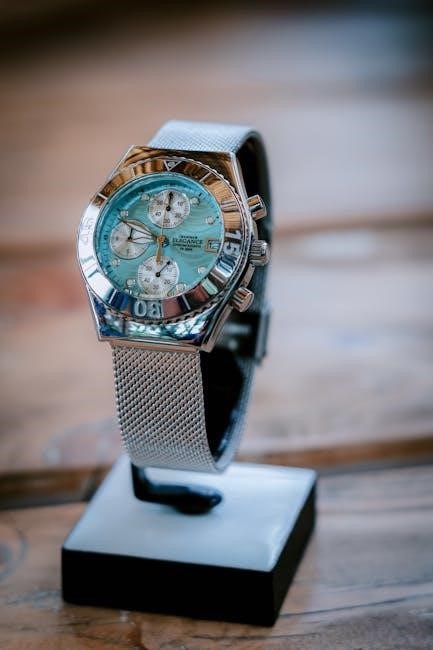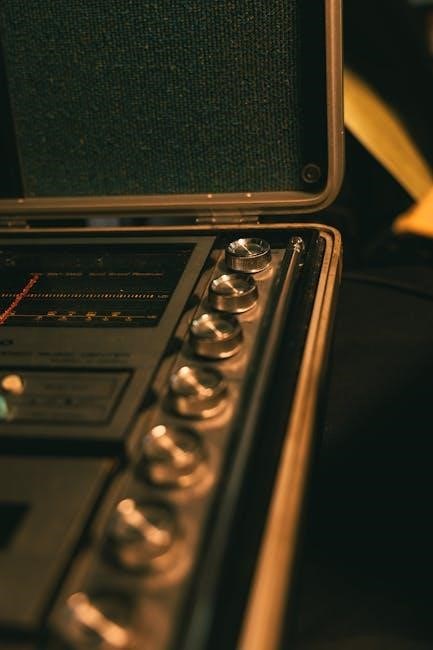Glass insulators, first produced in the 1850s, were crucial for telegraph and telephone lines, preventing electrical currents from grounding. Today, they are highly sought-after collectibles due to their historical significance, vibrant colors, and rarity. Collectors value them for their unique designs, embossing, and the stories they tell about early communication technology. Their popularity has grown significantly, with over 3,000 active collectors worldwide, supported by detailed price guides, reference books, and a thriving community of enthusiasts.
Overview of Glass Insulators and Their Historical Significance
Glass insulators, originating in the 1850s, were essential for telegraph lines, preventing electrical grounding. Their role expanded with telephone lines, adapting to technological advancements. Initially made of soda glass, later designs used more durable materials. These insulators witnessed the evolution of communication, becoming symbols of industrial progress. Today, collectors value them for their historical significance, design variety, and the stories they hold, making them treasured artifacts of our telecommunications history.
Why Glass Insulators Are Popular Among Collectors
Glass insulators have captivated collectors due to their vibrant colors, intricate designs, and historical charm. Each piece tells a story of early telecommunications, making them a bridge between technology and art. Rare colors like cobalt blue and emerald green significantly boost their value, while unique embossing details add to their allure. Collectors also appreciate the thrill of the hunt for rare specimens, with some pieces fetching thousands of dollars. Additionally, a strong collector community, supported by price guides and reference books, fosters a sense of camaraderie and shared passion, further fueling the popularity of glass insulators among enthusiasts.

Factors Affecting the Price of Glass Insulators
The price of glass insulators is influenced by rarity, color variations, and condition. Rare types, vibrant colors like cobalt blue, and flawless condition significantly increase value, driven by collector demand and historical significance.
Rarity and Scarcity of Specific Insulator Types
Rarity and scarcity significantly influence the value of glass insulators. Certain types, such as early Hemingray designs or specific CD numbers, are highly sought after due to limited production runs or historical significance. Insulators with unique features or those tied to notable manufacturers often command premium prices. Additionally, regional rarity, where certain insulators were produced in limited quantities for specific locales, can drive up demand. The scarcity of particular designs or embossing variations further enhances their desirability among collectors. As a result, rare insulators can sell for thousands of dollars, making them highly prized additions to collections. Rarity is a key driver of value in this market;
Impact of Color and Color Variations on Value
Color plays a crucial role in determining the value of glass insulators. Rare hues like cobalt blue, emerald green, and amber can significantly increase an insulator’s worth. For instance, an aqua insulator might be valued at $5, while a cobalt blue one could fetch $300. Unusual color variations, such as milk glass or swirling patterns, are highly sought after by collectors. The intensity and consistency of the color also matter, with vibrant, well-preserved tones commanding higher prices. Additionally, certain colors associated with specific manufacturers or eras can enhance an insulator’s desirability. Color remains one of the most important factors influencing the value of glass insulators.
Condition and Age: Key Determinants of Price
The condition and age of a glass insulator are critical factors in determining its value. Insulators in pristine condition, with no chips, cracks, or wear, command higher prices. Age also plays a significant role, as older pieces from the mid-19th to early 20th centuries are rarer and more desirable. The presence of imperfections, such as bubbles or cullet, can lower the value, while mint-condition insulators are highly prized; Additionally, the patina and overall aesthetic appeal of an insulator can influence its price. Collectors often prioritize condition and age when assessing an insulator’s worth, making these factors essential in valuation.

Identifying Rare and Valuable Glass Insulators
Identifying rare glass insulators involves examining CD numbers, embossing, and color variations. These factors, along with design patterns, help determine an insulator’s value and authenticity.
Understanding CD Numbers and Design Variations
CD numbers are unique identifiers assigned to glass insulator designs, helping collectors and researchers categorize and evaluate them. These numbers, often found in reference guides, provide detailed descriptions of shapes, sizes, and embossing patterns. Design variations, such as differences in shape, embossing, or color, can significantly impact an insulator’s value. For instance, subtle changes in lettering or the presence of specific markings can distinguish rare from common insulators. Collectors use these identifiers to authenticate and appraise their finds, making CD numbers and design variations essential tools in determining an insulator’s rarity and market worth.
Embossing and Markings: What to Look For
Embossing and markings on glass insulators are critical for identification and valuation. These markings often include manufacturer logos, patent dates, or model numbers, which provide essential historical context. Collectors should examine the clarity and precision of embossing, as worn or faint markings can indicate age or usage. Specific patterns, like the Hemingray “H” logo, are highly sought after. The presence of unique or rare embossing can significantly increase an insulator’s value, making it a key factor in pricing guides. Understanding these details helps collectors authenticate and assess the worth of their insulators effectively.
Recognizing Rare Patterns and Types
Identifying rare glass insulator patterns and types is crucial for collectors, as these factors greatly influence value. Certain shapes, such as pintypes or threadless designs, are highly sought after due to their historical significance and limited production. Colors like cobalt blue or aqua also play a role, with specific hues commanding premium prices. Additionally, unique embossing patterns or manufacturer markings can signify rarity. Reference guides and databases, such as the Hemingray Insulator Database, help collectors pinpoint rare types, ensuring accurate identification and valuation. Recognizing these distinctive features allows enthusiasts to uncover hidden gems and make informed decisions when buying or selling insulators.
Price Guides and Reference Materials
Comprehensive price guides like the North American Glass Insulators Identification, Reference, & Price Guide and The Collectors Guide for Glass Insulators provide detailed valuations and listings by CD numbers, embossing, and rarity, essential for understanding market trends and accurate valuations.
Recommended Price Guides for Collectors
Several authoritative price guides are indispensable for glass insulator collectors. The North American Glass Insulators Identification, Reference, & Price Guide offers extensive listings by CD number, embossing, and rarity. The Collectors Guide for Glass Insulators by Gary Cranfill and Greg Karefelas provides updated pricing and design details. Additionally, Price Guide for Insulators by John and Carol McDougald is a trusted resource for understanding market trends. These guides help collectors assess value based on factors like color, condition, and rarity, ensuring informed purchasing and selling decisions. They are essential tools for both newcomers and seasoned collectors seeking accurate valuations.
Role of Auctions and Market Trends in Pricing
Auctions significantly influence the pricing of glass insulators, as rare items often fetch high prices due to competitive bidding. Market trends reveal that specific colors, like cobalt blue, can increase an insulator’s value exponentially. For instance, a rare 1890s insulator recently sold for $11,000, highlighting the impact of scarcity and demand. Auction platforms, both online and in-person, provide a dynamic environment where collectors and dealers determine market values. These sales set benchmarks, guiding price guides and shaping future valuations. As a result, staying informed about auction outcomes and market shifts is crucial for collectors aiming to make wise investment decisions in this niche market.
Importance of Reference Books for Accurate Valuation
Reference books are indispensable for accurately valuing glass insulators, offering detailed insights into their history, design variations, and market demand. Titles like the North American Glass Insulators Identification, Reference, & Price Guide provide comprehensive listings, including CD numbers and embossing details, essential for identifying rare pieces. These books also include price guides, helping collectors and sellers determine fair market values. By consolidating historical data, design specifics, and current pricing, reference books empower collectors to make informed decisions, ensuring that valuations are both accurate and up-to-date. They remain a cornerstone of the insulator collecting hobby, bridging the gap between enthusiast knowledge and professional appraisal.

Collectors and the Glass Insulator Community
Glass insulator collecting has grown into a vibrant hobby, with over 3,000 enthusiasts worldwide. Collectors connect through clubs, shows, and events, sharing knowledge and showcasing rare finds. Stories of notable collectors and their extraordinary discoveries highlight the community’s passion and dedication to preserving these historical artifacts.
The Growth of the Insulator Collecting Hobby
The insulator collecting hobby began in the mid-1960s with a small group of enthusiasts. Over the decades, it has grown significantly, now boasting over 3,000 active collectors worldwide. The hobby’s expansion is fueled by the discovery of rare designs, vibrant color variations, and historical significance. Price guides and reference books have played a crucial role in educating collectors and fostering a sense of community. Events, clubs, and online forums provide platforms for collectors to share knowledge, trade pieces, and celebrate their passion for these unique artifacts. This growth highlights the enduring appeal of glass insulators as collectibles.
Insulator Clubs, Shows, and Events
Insulator clubs, shows, and events have become vital hubs for collectors, fostering a sense of community and shared passion. Organizations like the North American Glass Insulator Database connect enthusiasts, while annual shows such as the NIA National bring collectors together to showcase rare finds. These events often feature auctions, displays, and educational workshops, providing opportunities for learning and trading. Regional gatherings and online forums further strengthen the collector network, allowing members to share knowledge and celebrate their love for glass insulators. These platforms not only promote the hobby but also help preserve the history and cultural significance of these unique artifacts.
Stories of Notable Collectors and Rare Finds
Notable collectors have shaped the glass insulator hobby, often uncovering extraordinary pieces. Claude Wambold, a pioneer collector, amassed a vast collection, highlighting the thrill of the hunt. Rare finds, like an 1890s clear-glass insulator sold for $11,000, captivate enthusiasts, showcasing the hobby’s excitement and potential value. Stories of collectors discovering rare insulators, such as cobalt blue or aqua variants, inspire others to pursue this rewarding pastime. These tales not only highlight individual achievements but also illustrate the historical and cultural significance of glass insulators, making them treasured artifacts for collectors and historians alike. Each rare find adds to the rich narrative of this unique hobby.
Investing in Glass Insulators
Investing in glass insulators can be rewarding due to their historical value and aesthetic appeal. Rarity, color variations, and condition significantly impact their investment potential, guided by detailed price guides.
Understanding the Investment Potential of Glass Insulators
Glass insulators offer promising investment opportunities due to their rarity and historical significance. Prices are influenced by factors like color, condition, and design. Rare types, such as those with unique embossing or vibrant hues, often appreciate over time. Collectors and investors should research price guides and market trends to identify valuable pieces. Auctions highlight high-demand insulators, with some fetching thousands of dollars. While the market can fluctuate, rare and well-preserved insulators tend to hold or increase in value, making them a viable option for those looking to combine passion with potential financial returns in a niche collectibles market.
How to Buy and Sell Insulators Wisely

When buying or selling glass insulators, thorough research is essential. Use reputable price guides and auction platforms to determine fair market values. Buyers should focus on rare colors, unique embossing, and excellent condition, as these factors significantly impact value. Sellers should ensure accurate descriptions and high-quality photos to attract serious collectors. Consider consulting experts or joining collector communities for appraisals. Be cautious of reproductions and ensure authenticity. Auctions can yield high returns for rare items, but set realistic expectations. Stay informed about market trends and demand to make informed decisions. Building trust and transparency in transactions will foster long-term success in the insulator trade.
Caring for Your Glass Insulator Collection
To preserve your glass insulators, handle them with care to avoid chips and cracks. Clean gently with mild soap and distilled water, avoiding abrasive materials. Store them in a cool, dry place, away from direct sunlight, to prevent discoloration. Use acid-free materials for padding and avoid stacking insulators to minimize risk of damage. Display them in protective cases with UV-filtering glass to reduce fading. Regularly inspect for signs of wear or deterioration. Avoid exposing them to extreme temperatures or humidity. Proper care ensures your collection remains in excellent condition, maintaining its value and historical integrity for future generations of collectors and enthusiasts.




















































































